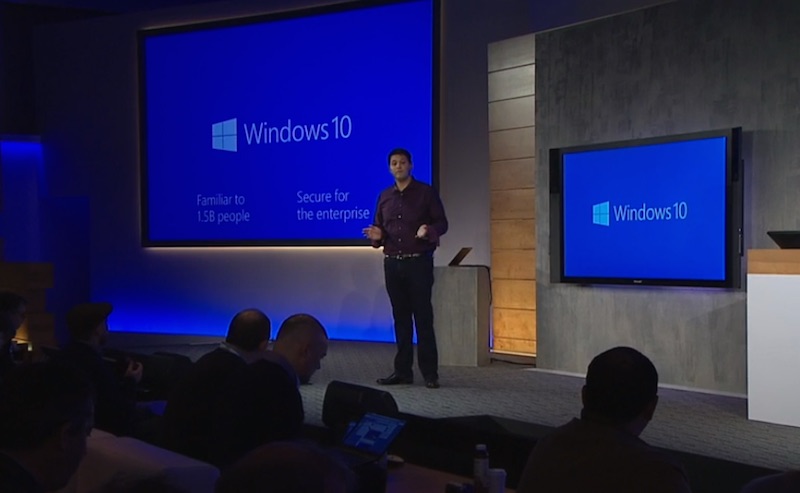Microsoft: Windows 10 will be Free Upgrade for Windows 7 and Windows 8 Users
At a Microsoft media event held at Microsoft HQ in Redmond, WA this morning, Microsoft Executive Vice president Terry Myerson announced that Windows 10 would be be a free upgrade for any users running Windows 7 or Windows 8 for a full year after the launch of Windows 10. This move has been rumored for several months, but Myerson’s confirmation means that Microsoft is keen to distance itself from the embarrassing debacle that Windows 8 turned out to be, and to also shore up the Windows client installed base in the face of threats from mobile devices and competing platforms from Google and Apple.
Microsoft: “We think of Windows as a Service”
In a post on the official Windows blog, Myerson elaborated on Microsoft’s thought-process behind the free upgrade. “This is more than a one-time upgrade: once a Windows device is upgraded to Windows 10, we will continue to keep it current for the supported lifetime of the device — at no additional charge. With Windows 10, the experience will evolve and get even better over time. We’ll deliver new features when they’re ready, not waiting for the next major release. We think of Windows as a Service — in fact, one could reasonably think of Windows in the next couple of years as one of the largest Internet services on the planet.”

While the event this morning was primarily focused on Windows 10, Microsoft also made several other new product announcements, including the Surface Hub display/meeting device and the Windows Holographic and Windows HoloSuite products, which Paul Thurrott will be covering in more detail in the near future over at Thurrott.com.
The Windows 10 Upgrade for Enterprise Customers
While the focus on today’s Microsoft event was primarily on the consumer features of Windows 10 and other Microsoft products — including DirectX 12, Windows 10 gaming, and Xbox One — Myerson provided scant details on how the free upgrade policy would apply for enterprise and volume-licensing customers.
- Related: Windows 10 Will Be a Free Upgrade
“With Windows 10, a best practice we recommend for many enterprise devices is to connect to Windows Update and be kept up-to-date with the latest security and productivity improvements as soon as they are available,” Myerson wrote. “You can learn more about our commitment to enterprises here, with much more to come in the following months.”
So the bottom line for enterprise and business customers? You’ll have to wait for more details, so stay tuned. And given the recent spate of failed and withdrawn Windows Update patches, Myers’s suggestion for Windows enterprise customers to “…to connect to Windows Update and be kept up-to-date with the latest security and productivity improvements…” may not have been the best choice of words.
Coming Soon: A New Windows 10 Technical Preview Build
Of particular interest for Microsoft enthusiasts and system administrators was Myerson’s announcement that an updated build of the Windows 10 technical preview will be available for downloading the week of January 26th for Windows Insider program members, so some new features will be functional and available for testing then.
Also: Don’t forget to bookmark our Windows 10 resource page (and Paul’s Thurrott’s Windows 10 landing page) for all the latest Windows 10 news and developments.
So what do you think of Microsoft’s decision to make Windows 10 a free upgrade? I’d love to hear what you think, so please add a comment to this blog post, or contact me on Twitter or Google+. You can also catch up on my posts in the Petri IT Knowledgebase forums.



